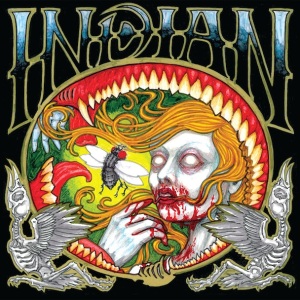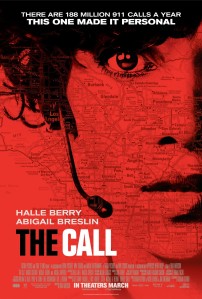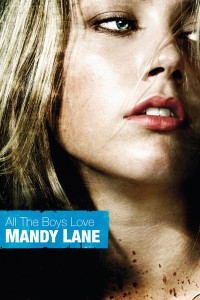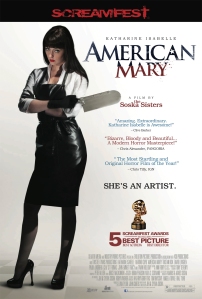Whether you know it or not, Harold Ramis has bettered your life. With his passing earlier this week, I felt most saddened to hear person after person say “Harold who?” when I shared or discussed the news. These same people brightened quickly, before their faces dropped upon realizing the great loss as I listed titles from Harold Ramis’ career. His filmography is impressive. Even more impressive is the number of truly funny, talented people Ramis pushed forward into more name-worthy careers. But even this is to Ramis’ credit. He was a gentleman. He was a true comedian. And although the material was his, the jokes forming in his unique curly-headed brain, he always gave the best laughs to another man. Take Bill Murray, for example. Look at Stripes, Ghostbusters and its sequel, Groundhog Day, even Meatballs and Caddyshack. Lord, I don’t know the whole story between those two. Who knows the truth behind any story starring Bill Murray? But behind all those classic Bill Murray deliveries was a Harold Ramis script. The truth is that Harold Ramis knew comedy. He knew what was funny and who was funny. And he stepped to the side, into the alcove far too often, to let another voice deliver his material. Harold Ramis was one of the good guys. A fellow with a perpetual smile. A unique talent. An unfortunately stoic snot-balled voice. A man with a beloved fan-base of millions, many of whom never knew his name. God bless Harold Ramis for the laughter he shared, the brilliance he challenged, the humility he personified. And God bless his people.
Archive for the ‘Kiki Malone’ Category
A Belated Tribute to Harold Ramis
Posted: March 3, 2014 by Kiki Malone in Kiki MaloneTags: Bill Murray, Caddy Shack, Eulogy, Ghostbusters, Good guys, Groundhog Day, Harold Ramis, Meatballs, Stripes, Tribute
Against Me! TRANSGENDER DYSPHORIA BLUES (2014) – A Review
Posted: March 3, 2014 by Kiki Malone in Kiki Malone, Music ReviewsTags: Against Me, Laura Jane Grace, Record Reviews, Tom Gables, Transgender Dysphoria Blues
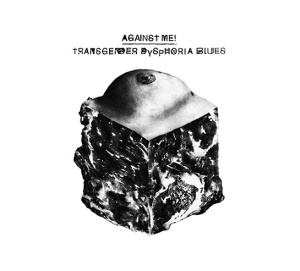 Alright, let’s address the elephant in the room. Yes, Transgender Dysphoria Blues is the first Against Me! album to feature vocalist/guitarist/songwriter Tom Gables performing as Laura Jane Grace. Yes, Tom is a chick now. Yes, Tom’s journey to become Laura Jane is explicitly addressed on this record (check opening two tracks and the closer). No, that is not why this record is a front-runner for my favorite rock record of 2014.
Alright, let’s address the elephant in the room. Yes, Transgender Dysphoria Blues is the first Against Me! album to feature vocalist/guitarist/songwriter Tom Gables performing as Laura Jane Grace. Yes, Tom is a chick now. Yes, Tom’s journey to become Laura Jane is explicitly addressed on this record (check opening two tracks and the closer). No, that is not why this record is a front-runner for my favorite rock record of 2014.
If “controversy” alone determined the value of rock-n-roll, Miley Cyrus’s Bangerz would be topping Lorde’s Pure Heroine, which would be topping the new Beyonce porn-package, which would be topping this new Against Me! But we’re adults here (sort of), so we should be enjoying the music for the music. And, in the Transgender case, I only needed one play through the snare-snappy, rolling-riffs, angry Tom Petty-esque opening title track – “You want them to notice / The ragged ends of your summer dress / You want them to see you / Like they see every other girl / They just see a faggot / Hold their breath not to catch the sick” – to lay my dollars down. I’ve had it in constant rotation since it’s late January release.
Controversy and autobiographical journeys aside, this is good rock-n-roll. This is roll the damn windows down and let this record spin three times to Austin on a fine day rock-n-roll. This is curious, questioning, angry, fist and stiletto hells rock-n-roll. And it’s solid cover to cover.
Confession: I’ve never been a die-hard Against Me! fan. I left all that sweaty band-sticker-on-my-dashboard love to my buddy Pepe. But this record took me back through Against Me!’s discography, through records that felt familiar but still relatively fresh, and the experience won me over fully.
Transgender is a culmination record, capturing several different sounds Against Me! has charted and, at times, perfected. You like the The Eternal Cowboy and In Search of a Former Clarity brass-knuckle, bar-room, steel-toed era, you’ve got tracks like “Drinking With The Jocks” and “Osama Bin Laden As The Crucified Christ” and “Unconditional Love”. You prefer the poppy, high-hat dance-ability of New Wave, you’ve got the title track and “True Trans Soul Rebel” and “Paralytic States”. You fancy the stripped down arena rock of White Crosses, you’ve got “FuckMyLife666” and “Dead Friend” and “Two Coffins.” Here’s a ten track retrospective album, picking up various licks and sounds from a fluctuating career.
But the clincher track here for me, the one that pulls the entire AM! canon together and simultaneously pushes it forward, capturing Laura Jane’s grittiest angst, is the closing “Black Me Out”. Opening with a simple strum, Laura Jane chimes in calmly before the entire track erupts – “I wanna piss on the walls of your house / I wanna chop those brass rings / Off your fat fucking fingers / As if you were a king-maker / As if, as if, as if black me out”. The message here being that we haven’t heard the end or the even best from Laura Jane Grace, yet. There’s more clattering about in that shifting soul. Great. Bring it on. I’m already pining for the next Against Me! release.
GIRLS AGAINST BOYS (2013) – A Review
Posted: March 2, 2014 by Kiki Malone in Film Reviews, Horror, Kiki MaloneTags: American Mary, Austin Chick, Danielle Panabaker, DVD Collection, Exploitation, Film Reviews, Girls Against Boys, I Spit On Your Grave, Revenge, Teeth
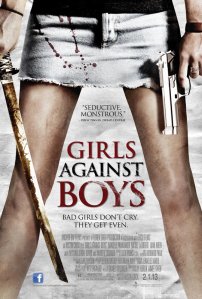 Perhaps it’s tempting to lean on exploitative visuals to tell certain stories or explore particular ideas. For instance, I Spit On Your Grave is now a three film “franchise”, featuring the Meir Zarchi original (1978) and two modern retellings / reimaginings. These films are known for pushing the boundaries of cinematic acceptability over the edge into blatant exploitation. The film-makers justify the exploitative imagery by pointing to the themes of the films: how else could / should the story of a woman’s violation and need for vengeance be told except explicitly? And shouldn’t the cinematic portrayal of the woman’s violation be just as explicit and vile as her cinematic acts of vengeance? Isn’t cathartic cinema valuable? And how dare the audience shy away from merely seeing such a violation when so many women actually experience similar atrocities?
Perhaps it’s tempting to lean on exploitative visuals to tell certain stories or explore particular ideas. For instance, I Spit On Your Grave is now a three film “franchise”, featuring the Meir Zarchi original (1978) and two modern retellings / reimaginings. These films are known for pushing the boundaries of cinematic acceptability over the edge into blatant exploitation. The film-makers justify the exploitative imagery by pointing to the themes of the films: how else could / should the story of a woman’s violation and need for vengeance be told except explicitly? And shouldn’t the cinematic portrayal of the woman’s violation be just as explicit and vile as her cinematic acts of vengeance? Isn’t cathartic cinema valuable? And how dare the audience shy away from merely seeing such a violation when so many women actually experience similar atrocities?
Yeah, I don’t know about all that. All I know is that I’ve seen all three I Spit On Your Grave films, and I walked away from each one feeling that justice and awareness and communication weighed far less than amplified shock value in the filmmaker’s process. I could be wrong, but these films felt more pornographic – in their treatment of both violation and vengeance – than honestly cathartic.
Girls Against Boys, despite its dramatic title and provocative poster, does not rely on exploitation to explore similar issues of violation and vengeance. It’s more akin to films like Teeth and American Mary, working more in visual subtlety, relying more on the strength of the narrative and the precision of good performances, which is a far-cry from simply being “tasteful” in dealing with a delicate situation.
Girls Against Boys tells the story of Shae (Danielle Panabaker) who befriends Lu (Nicole LaLiberte) shortly after a nasty break-up and immediately before falling victim to a new possible love interest. Shae reaches out to family and friends for support, but no one proves available except Lu. And if hell truly hath no fury like a woman scorned, Lu gladly saddles up alongside Shae as fury personified. The girls quickly become a Thelma and Louise pair hell-bent on vengeance, but inevitably the vengeance reaches farther than anticipated.
On the surface (and by mere appearance), Girls Against Boys looks like a simple bad-girl-with-a-gun B-grade sleeper, but there’s some real heart to the telling of Shae’s story. Kudos to writer / director Austin Chick for rising above the possible trenches of genre trappings and avoiding simple exploitation maneuvers. He’s created, instead, a unique character study of a young woman caught a painfully dichotomous mindset. Not to mention, I never imagined the nonchalant enjoyment of Captain Crunch could be so creepy. Girls Against Boys gets a solid 3.5 geisha blades out of 5. Here’s proof again that the viewer’s imagination and sympathies are far more vicious than any camera’s eye.
The Call (2013) : A Review
Posted: January 14, 2014 by Kiki Malone in Film Reviews, Kiki MaloneTags: 2013 Movies, Abigail Bresline, Car Trunks, Film Reviews, Halle Berry, RedBox, Spouse Film, The Call
They put Halle Berry on the poster, but The Call is totally Abigail Breslin’s movie. Little girl’s hardcore! She performed two thirds of the film in the trunk of a car and the last third strapped to a table. Even with all these confines, she made Halle Berry look like a mannequin. I guess without the pressure of being under Billy Bob, Halle Berry ain’t got much to offer. Put the Oscar winner in a trunk, yo!
Also, those first two-thirds are nail-biting awesome-sauce. I got suckered in against my will when I walked in on Abigail Breslin beating the tail-light off the car from inside the trunk. Little girl is bad ace! But it all dissolves to a ridiculously forced female superhero scenario when Halle Berry decides X-Men’s Storm ain’t enough action figure fodder for one career.
Overall, The Call gets 2.5 fully clothed Morris Chestnuts out of 5. You can skip this entirely, unless your spouse brings it home from the RedBox.
– kiki
ALL THE BOYS LOVED MANDY LANE (2006) : A Review
Posted: January 13, 2014 by Kiki Malone in Film Reviews, Horror, Kiki MaloneTags: All The Boys Love Mandy Lane, Amber Heard, DVD Collection, Jonathan Levine, Slasher flicks, Teen screams
I’m addressing this to you because I cannot fathom for a moment that Grave or Dr. Wertnz would be much interested in an indie-flick (by Jonathan Levine, director of 50/50 and Warm Bodies) that collides a John Hughes highschool drama and an early 80s slasher-whodunnit so masterfully that I cheered at the end, spilling a sleeping pug from my lap onto the floor. Oh, and Amber Heard, before she was a lesbian or dating Johnny Depp, leads as Mandy Lane – the Amanda Jones of scream queens if Some Kind of Wonderful had been a slasher. Reasons to watch All The Boys Loved Mandy Lane keep stacking like bodies on a weekend woodland getaway!
There’s some indie-film lore surrounding this film about it making the tiny theater circuit back in 2006, then somehow landing on underground video (online or VHS, I’m not sure), and the rights were greatly debated for a spell until the director Johnathan Levine finally made name enough for himself with Warm Bodies to interest a distributor in releasing this thing to your local RedBox and BestBuy. I probably got all that wrong, having read about it in an Entertainment Weekly during a morning constitutional, the details are fuzzy at this point. What I do know is that the release of this sucker is considered a high-fiveable victory for indie-film, and film-buffs in the know were stoked. I tend to trust film-buffs in the know more than critics, and this time it worked in my favor.
This film looks and feels amazing. The music is creepy perfect, swimming all the way in-between Robert Earl Keen (who makes a cameo at a gas station) Texas country to the Go-Gos to Beethoven and back to something you’ve never heard but that fits the visual tone like a Nintendo PowerGlove that actually works. Levine choreographs a few montage scenes that lift the film above its horror genre trappings, tricking the viewer into believing this is all a sweet, Sundance coming-of-age drama rather than the kind of film where girls are slaughtered by shotguns literally shoved down their throats. The gore is good. The kill scenes are fun. And the acting is above expected par. Amber Heard is always great, even when the film sucks lobotomized brain balls (ie. John Carpenter’s The Ward).
But what makes this movie is Levine’s direction and Jacob Forman’s script. Again, Levine pitches this thing perfectly, allowing tensions to build while flinging red herrings like a Seattle fish market pro. My only complaint with the direction was Levine’s necessity to fill 90 minutes. Time swam around a few supporting characters’ existential crises, which felt laborious. Fortunately, this made the audience cheer for certain deaths all the more, so perhaps it worked afterall. Forman’s script is interesting because his characters are paper thin. However, combining the script and the direction – which shows us the majority of the story from Mandy Lane’s perspective – the viewer begins to wonder if they’re seeing the actual character or Mandy Lane’s impressions of each person. It gets a bit meta (as the kids are want to say these days), unless I’m just reading too much into it. The latter is usually the case when it comes to films like this.
Overall, I gave All The Boys Loved Mandy Lane 4 roof high swimming pool dives out of 5. This film was a pleasant surprise, convincing me all the more that the nerds know more than the critics. And since we’re nerds, that puts us on the winning side.
I heart you, John Barber, more than Keith hearts Watts, but not in a I’m-giving-you-my-future-in-the-form-of-earrings kinda way,
– kiki
Top Films of 2013
Posted: January 10, 2014 by Kiki Malone in Film Reviews, Kiki MaloneTags: 12 Years A Slave, American Hustle, Film Reviews, Frances Ha, Fruitvale Station, Gravity, Lana Del Rey, Mud, The Conjuring, The Great Gatsby, The Way Way Back, This Is The End
AMERICAN MARY : An Un-Scary Horror Triumph
Posted: July 17, 2013 by Kiki Malone in Film Reviews, Horror, Kiki MaloneTags: American Mary, Film Reviews, Jen Soska, Katharine Isabelle, Soska Sisters, Sylvia Soska, Twisted Twins
Non-horror hounds often asked what is the “scariest” horror film I’ve ever seen. It’s a fair question, seeing as how most horror directors do intend to scare their audiences, but the question limits the possibilities of truly good and interesting horror. Although I rarely take the time to explore this issue with inquisitors, instead naming a few horror films that freaked my stuff out (Alien, Rosemary’s Baby, High Tension, the original Night of the Living Dead), my list of favorite horror films would include several titles that wouldn’t be considered “scary”. Often, the best horror does not seek to frighten as much as it seeks to recognize and respond to the grotesque – those unpleasant and unsavory forces in nature and society and spirit most folks prefer to avoid.
American Mary is such a film. Nothing about American Mary is “scary” per se, but it is twisted and disturbingly sensual. However, far more important than any of these descriptive effects, American Mary is expertly told and masterfully acted, making it the rare horror film that places more emphasis on storytelling than overused genre tenets.
Broke and bored with med school, Mary (Katherine Isabelle, from Ginger Snaps) follows a Craigslist type ad in search of quick cash, a decision that directly rabbit holes Mary into the body modification subculture. The symbiotic relationship between Mary and her clients is almost too perfect – Mary needs money while certain extremely rich women want questionable cosmetic procedures. The women from the body mod community trust Mary because she’s young and attractive, feeling like she might understand their desire to surgically lock their beauty against the strains of time. Mary admittedly does not understand her clients’ impulses until her beauty inspires the source of her pain. At which point, Mary not only exceeds as a celebrity within the community, she also finds vengeful pleasure in practicing her new surgical interests.
I should mention at this point that American Mary‘s directors are sisters, the “Twisted Twins”, Jen and Sylvian Soska. Usually, a director’s gender would hold little to no relevance regarding their film, but, in this case, I found the storyteller’s voice as captivating as the story itself. In no way could anyone suggest that these female filmmakers shied away from the inevitable gore and brutality of Mary’s story, or even from the sensuality of certain characters. Still, I was fascinated by the directors’ visual restraint in a few key scenes, particularly in an early violent scene pitching a male instructor against Mary, favoring instead the emotional impact of Mary’s own personal and internal modifications. The Soska sisters, who make an appearance as twin clients seeking a bizarre form of physical connection, reveal in their direction a keen eye for exploring a character’s inward shifts and motivations. For instance, after her attack and her departure from med school, Mary’s physical beauty and sexuality becomes most evident in her more monstrous moments. The Soska sisters seem to suggest through Mary that misogynist acts have the potential to restructure the core trajectory of a woman’s life as well as her self-image.
Of course I enjoy a horror film with good scares, but what I love most in films – from any genre – are well-told stories with good characters played by strong actors. With this criteria, I give American Mary 3.5 Betty Boop facials out of 5. The Soska sisters are still young, and the film, not surprisingly, feels a bit sophomoric at times. Regardless, at its heart, American Mary is as pure and honest as a grotesque film be.
Drunk History – Season 1 Episode 102 Review
Posted: July 16, 2013 by Kiki Malone in Kiki Malone, TelevisionTags: Drunk History, Jen Kirkman, YouTube
I think we can all agree here on two sobering truths:
- Jen Kirkman’s “Drunk History” retelling of Frederick Douglass and Abraham Lincoln’s friendship is one of the YouTube’s finest moments, as well as one of YouTube’s most solid defenses for existence;
- regardless, it’s tough to make a workable show from a premise that involves keeping the main star from puking on a cat, as happens in this first full episode of “Drunk History”.
No matter who the celebrity star or what the poison of the drunk storyteller, every audience will weigh every “Drunk History” skit to Jen Kirkman’s Douglass-Lincoln bit. That moment was just a rare gem amongst literal drunken stupors.
Regardless (again), I watched the first episode of the new “Drunk History” show on Comedy Central and I can only apologize to myself for watching it sober. The joke wore thin even before the opening credits ended. Still (kinda like a third regardless), I got a good laugh out of the first drunk storyteller angrily telling the camera crew they have no ambition because they refuse to eat cookies with him. The final bit – starting at 15:15 – about Elvis Presley (Jack Black) meeting Richard Nixon (Bob Odenkirk) was pretty great – mainly because that final guy was such a smooth drunk. He didn’t seem to be over playing it. The absinthe strapped him a fake baritone voice and he failed miserably at his jive turkey approach to deliver all the wrong details. Job could’ve used a guy like that to sit in the ashes and drink with for week or more.
The second episode of Drunk History airs tonight on Comedy Central. More than likely, just as I do with loads of shows I claim to not like (“Inside Amy Schumer” comes immediately to mind), I’ll still end up watching half a dozen episodes and then hating myself for it immediately. Why didn’t I just watch Metalocalypse instead?! More “Drunk History” to come!
A Focus on Filmmakers and Storytellers : How The Farrelly Brothers Fail To Get Their Story Straight On Love And Marriage
Posted: July 13, 2013 by Kiki Malone in Film Reviews, Kiki MaloneTags: Comedy, Comedy Movies, Directors, Hall Pass, Love, Marriage, Noah Baumbach, Nora Ephron, Storytellers, The Farrelly Brothers, The Heartbreak Kid, Themes
My thinking towards film recently shifted. Or, perhaps I should say, my approach to selecting films – either to purchase or view – has become less about genres or performers and much more about directors or producers. John Hughes and Judd Apatow are primarily responsible for such focus, as well as Sophia Coppola and Quentin Tarantino. But, to a slightly lesser degree, a few of my favorite horror filmmakers – Lucky McKee, Ti West, Rob Zombie, Alexandre Aja, Craven and Carpenter and Hooper – also piqued my interest in the stories filmmakers tell.
Two filmmakers I hope soon to explore are Nora Ephron and Noah Baumbach. Long ago, before film became more than a way to pass time with friends or to help endure a bad case of strep throat, I somehow managed to watch all of Ephron’s films, but I do not remember them as well as I’d like. And I’ve never seen a single title by Baumbach. As geeky as it sounds, I’d like to systematically work through Ephron and Baumbach’s filmographies this summer, piecing together an overarching narrative from the various stories they each told in film. I do not expect the connecting lines to be neat, but with a careful eye some sort of connection will surely come into focus between titles.
**********
For instance, today I watched two films by the Farrelly brothers: The Heartbreak Kid (2007) and Hall Pass (2011). I did not intend to commit myself to a double-feature. But one film seemed to so seamlessly bleed into the other that I really had no choice.
If you’re not familiar, the Farrelly brothers’ The Heartbreak Kid is a remake of Elaine May’s 1972 comedy of the same title featuring a young Cybil Shepherd. In the Farrelly remake, a nearly middle aged bachelor named Eddie Cantrow (Ben Stiller) finally takes the marital plunge when he meets the irresistibly beautiful and charming Lila (Malin Akerman). Ironically, Cantrow’s fears of marriage quickly manifest when Lila “flips a switch” almost immediately at their wedding, becoming less than appealing with every new secret revealed. Matters only complicate further when, on his honeymoon, Eddie meets the irresistibly beautiful and charming Miranda (Michelle Monaghan). New sparks fly, hilarity ensures (thanks mostly to Rob Corddry and Danny McBride), and the awkwardness is deliciously unavoidable. The Heartbreak Kid received massively polarized reviews on Netflix, and I fall into the thumbs-up camp on this one. Though not a classic like the Farrelly’s Dumb and Dumber and There’s Something About Mary, The Heartbreak Kid was super funny and I greatly preferred Akerman to Diaz – not a tough comparison to make when Akerman’s on screen with Stiller. I give The Heartbreak Kid 3.5 bush rings out of 5.
But the story in The Heartbreak Kid is typically anti-marriage. Love wins in the end, but commitment is the anchor holding back boats from greater adventure. And this is why, immediately after The Heartbreak Kid, I launched into Hall Pass: the former commenting on relationships before and at the beginning of marriage, the latter a decade or more into the wear and tear of marriage.
Hall Pass (2011) tells the highly predictable story of two husbands (Jason Sudekis and Owen Wilson) given a week long hall pass away from the boundaries of marriage by their wives (Christina Applegate and Jenna Fischer). Of course, as we expect, the husbands fall apart, the wives somewhat thrive, but both parties soon realize their truest love for their spouses, at which point – three minutes before final credits – they gleefully and willingly return to routines of children and responsibilities and familiar sex. It’s slightly funny, kinda dirty, but never bodacious enough to push real buttons or convince viewers that either of these marriages are remotely in danger. Still, Stephen Merchant and Richard Jenkins offer supporting roles and make the entire film worth the effort. I give Hall Pass 2 exploding thongs out of 5.
**********
I would never expect filmmakers to hold or express a congruent view of something as socially arbitrary as marriage over the course of four years, but you gotta wonder what the hell these Farrelly brothers were thinking: The Heartbreak Kid suggests that marriage is the death of adventure and surprise and romance, while Hall Pass claims that men desperately need to find good wives and commit to good marriages in order to save themselves from their own innate immaturity and emptiness. In both films, men are greatly broken creatures. However, in the former film, woman breaks man further while in the latter woman offers man’s salvation. You have to wonder after looking at both films, WT-and-F?
I’m not sure exactly what we as viewers should take away from the marital dichotomy in these two very opposite films, or if we should take anything at all – other than a few good one-liners. But it’s this confused commentary, whether intentional or not, that I find interesting. And it’s these consistencies and inconsistencies that I’m anxious to look for in the films of Baumbach and Ephron. It’s funny when looking at the landscape of just these four filmmakers – the Farrelly brothers, Noah Baumbach, Nora Ephron – they’re all telling something of the same story: mankind both requires and wrestles with love. How that love is portrayed or delivered changes per story and storyteller’s hand, but the stories from these tellers always point back that same theme of requiring and wrestling love. And I’ve reached the place, as a movie lover and film geek, where that line of connection and disconnection now fascinates me even more than the films themselves.
